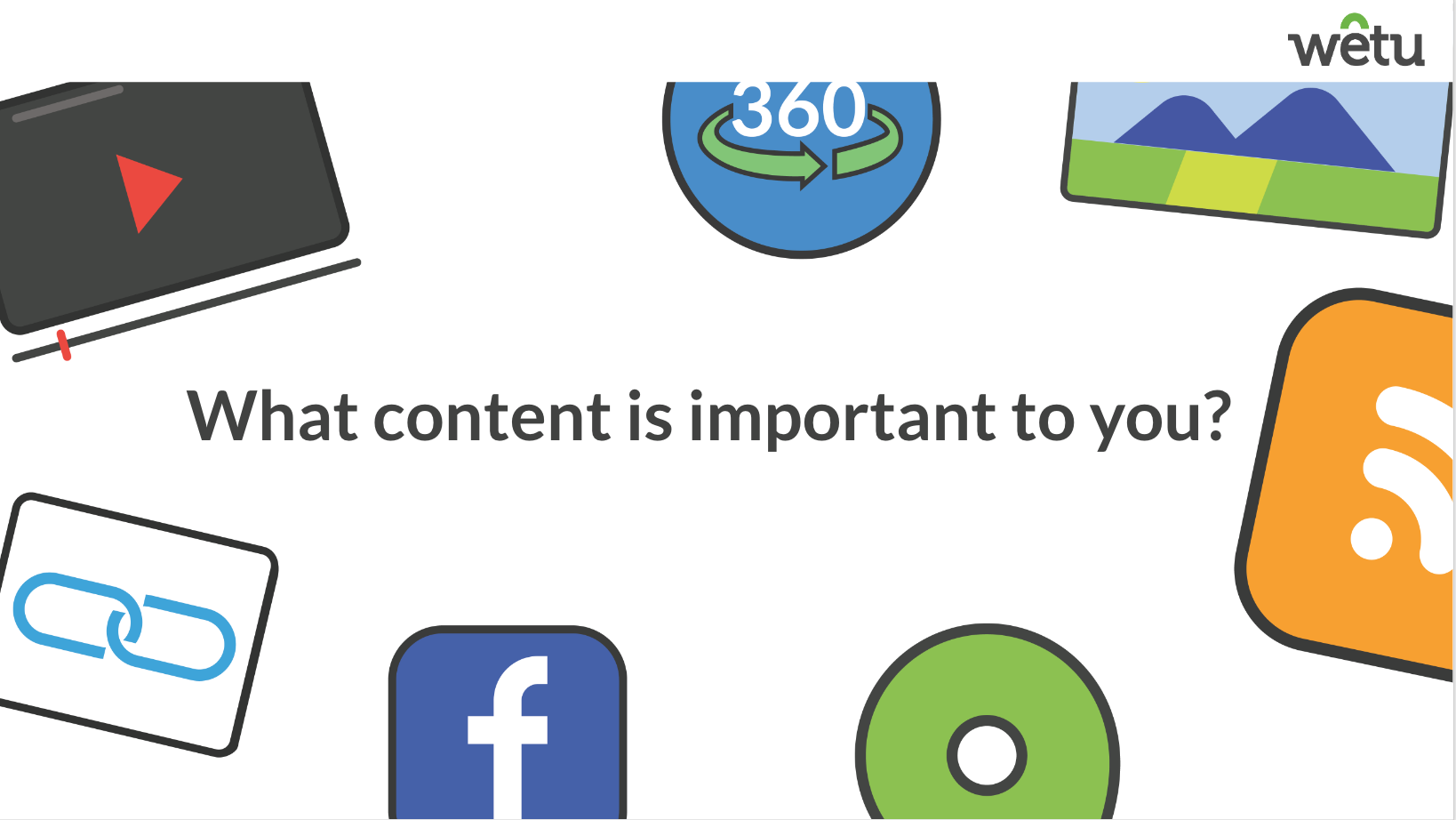Without content, there is no travel buyer journey… Your brand becomes a lonely thing of beauty, lost among a host of other great things to do on a trip! Great content sets you apart from the rest – it showcases your brand and products. But to do that, it must get around, into sales channels and in front of the people who need it to help inform their travel choices. And it must look inspired.
The entire point and purpose of Content
We call it King of the travel sale for a reason: nothing sells travel like a good pic! The traveller lounging in some far-off den of luxury, casting a dreamy gaze over a breathtaking vista, unique, foreign and interesting. Colours, promises of fragrance and texture, opulence or the rough charm of nature, the moving sights and sounds of an experience so vivid as to imagine oneself inside it.. Photographs are the lifeblood of our trade, and video and VR its pacemakers.
You just cannot expect to sell to travellers without engaging content.
Whether your strategy is to sell directly to the travelling public or to the trade, or both, each has needs that content addresses. For the average traveller that considers themselves savvy and independent enough to find what they want on their own, how your content represents your products is obviously hugely vital to them. Even if they’re influenced by peer reviews and value comparisons, they still want to ‘see’ what they’re buying into.
Same applies to whatever they buy via travel agents or tour operators – your content is as much a deciding factor as price, location and value for money.
 Your trade partner typically has 3 major needs to satisfy, assuming place and price are right:
Your trade partner typically has 3 major needs to satisfy, assuming place and price are right:
1⃣the choice of a preferred supplier
2⃣access to their content
3⃣content that puts on the best show
The truth about appearances is that no matter how great a product is, if it’s not shown off well, hi-res pics taken from flattering angles, videos of happy people living their best lives, it misses out on opportunities.
Pains: Soooooo many ways and formats to capture, store and share pictures, videos, virtual tours and descriptions. And activities and dining options, spa treatments, things to do nearby; not to mention maps and directions, and content in multiple languages. Include all of that? Absolutely, yes! And each time something changes, new pics or experiences to be added, content must be updated and shared again. Not to mention trade partners asking for pics to download for their websites or proposals, faster than you can keep up with (if you’re lucky to have such a demand). Being slow to revert back to content requests can cost you. Ouch.
Opportunities: Travellers are hugely supported in decision-making by what they can see for themselves. The richer the content, the better. Tour operators are learning that; so they’re open to using brands that get it right. With so much content out there on the world wide web (lots of it average to bad), getting the image size and resolution right, information accurate, description concise, imagery and detail consistent wherever your brand is represented, already gives you a competitive advantage.
Getting your content around
We call distribution Queen of the travel sale for a reason. Here’s a quick comparison to determine how far some strategies take your content:
| paper brochure, catalogue, coffee table book | ✅glossy, great-looking prints can work well as collectables
✅preferable to old-school consumers who like something they can touch |
😡costly to produce, cumbersome to transport & distribute printables, especially globally
😡accessed by end users in-store/ via travel agency only 😡shared with the trade in person at rep visits, trade shows only 😡slow & costly to implement content updates |
| USB flash drive/stick | ✅easily portable device
✅different storage capacities ✅brandable as a handy gift / marketing accessory ✅preload PDF brochures, product catalogues & videos |
😡small & easily lost
😡can be physically damaged – problematic if this is the only way to access content 😡data can go missing once memory depletes 😡each time something in the content needs to change, additional/new info must be shared on a new USB 😡usually shared in person |
| WeTransfer | ✅moves data across systems via email or file links
✅free transfer up to 2GB/file ✅notifications emailed when files are sent or downloaded ✅data can include pics & videos, also shareable via mobile app |
😡file limits for free & paying users
😡no guarantee recipient will be able to download 😡file link is active for 7 days by default (only able to change time limit on a premier account) 😡deleted files cannot be retrieved 😡files must be uploaded individually 😡content updates would require new file transfers |
| Dropbox | ✅allows for file storage & sharing
✅useful for multiple files with 2GB free storage available ✅files have shared-link passwords with view-only or edit permissions ✅add recipient email address to give access to or generate a link anyone can use |
😡pay more for better storage capacity & more users
😡recipients without Dropbox accounts cannot access sent files 😡file links have expiration dates by which time recipient must download or be denied access 😡some users complain that service is slow with hours spent uploading/downloading content 😡hard to locate files at times |
| website | ✅mobile-responsive design makes content available on any device
✅widgets or plug-ins can incorporate social, video & audio media content ✅makes content available worldwide 24/7 |
😡can be time-consuming & incur ongoing development/ costs to update content to stay relevant, interesting & accurate |
| social media platforms | ✅share content 24/7 with global audiences
✅a great travel influencer ✅free to join & post content ✅social sharing further distributes content like pics, videos, links to docs & blogs |
😡content must be refreshed & visually engaging at all times to compete with other brands in the same space
😡requires time, effort, even dedicated staff to maintain profiles as interest is defined by what’s trending 😡better, targeted reach achieved via paid advertising |
| ✅provides global access to downloadable content
✅recipients can store content on their devices ✅easy to forward & respond to content ✅inexpensive way to distribute same content to multiple recipients |
😡attachment limits with big file transfers can cause inconvenience to both sender & recipient
😡massive files can lead to overstuffed & unresponsive inboxes, be mistaken for spam & go unopened 😡limited storage space 😡pics, video, PDF or Word docs, etc. begin to date from the time they’re sent – new/updated content needs to be sent separately |
Getting your product into sales
Turn any which way on the Internet in search of travel content and you’ll bump into some sort of content aggregator or booking portal. Consider which way your content goes and to what end.
There are systems that can get your brand into sales and systems that get your content into sales. Sounds like the same objective, but there is a difference. How’s that?
A travel product content aggregator or booking portal represents your brand to public and/or trade. Let’s check out a few you may know and use:
- HotelHub aggregates content and works with agents in an integrated workflow, while enabling users to book hotels from any device or system. Travellers can book online, directly with HotelHub or contact their preferred agency for support if changes need to be made to the booking, like a cancellation during travel.
- Amadeus integrates hotel aggregator content including maps, images and videos, with multilingual descriptions. Content is available to view and access via search and filter functions, for direct booking by the travel trade.
- Sabre Hospitality Solutions provide integrated reservations systems, property management system and distribution. Content is displayed at room and rate level, side-by-side, for efficient comparison.
Pains: In the case of B2C portals, brand loyalty suffers when travellers lose out on loyalty rewards, it’s hard to change bookings or get refunds; and there’s a risk of outsourced customer service reflecting negatively on a brand. Control over the quality of content representing a brand lies in the hands of the booking site too. As for B2B, whatever content is visible may not be available for the trade to repurpose in marketing collateral, nor is inventory necessarily good quality, customisable or downloadable.
Opportunities: A good content management system will solve the problem of getting quality content into the sale, given that better content generates better sales prospects. Empowering the trade with content they can manipulate for their own websites, download and share, takes a travel brand that much further than the confines of the third party aggregator/booking site. Brands that make it easier for travellers to book directly as well, provide their end-users with flexibility and potentially better service.
Use 1 system or use more?
Access, usability and credibility are key components of empowering travel content. Remember the end-user looking for content to help them make an important decision.
Remember your trade partners with their particular challenges:
🎣 How do I get this content into my proposals, my catalogue, and onto my own website?
🎣 Will it represent my preferred suppliers consistently, so that we gain the trust of both agent and traveller?
Content quality and reach are the legs that carry your brand into the competitive space.
Ultimately, it must look great, create an appetite for travel, and it must go further. Maybe you use a combination of distribution formats and sales channels in pursuit of wider brand exposure. If you do employ a mixed approach, consider how effective the different practices are at getting your content where it’s wanted and what it looks like once it gets there. Because nothing sells travel like great content.


Would you like to share your thoughts?
Your email address will not be published. Required fields are marked *